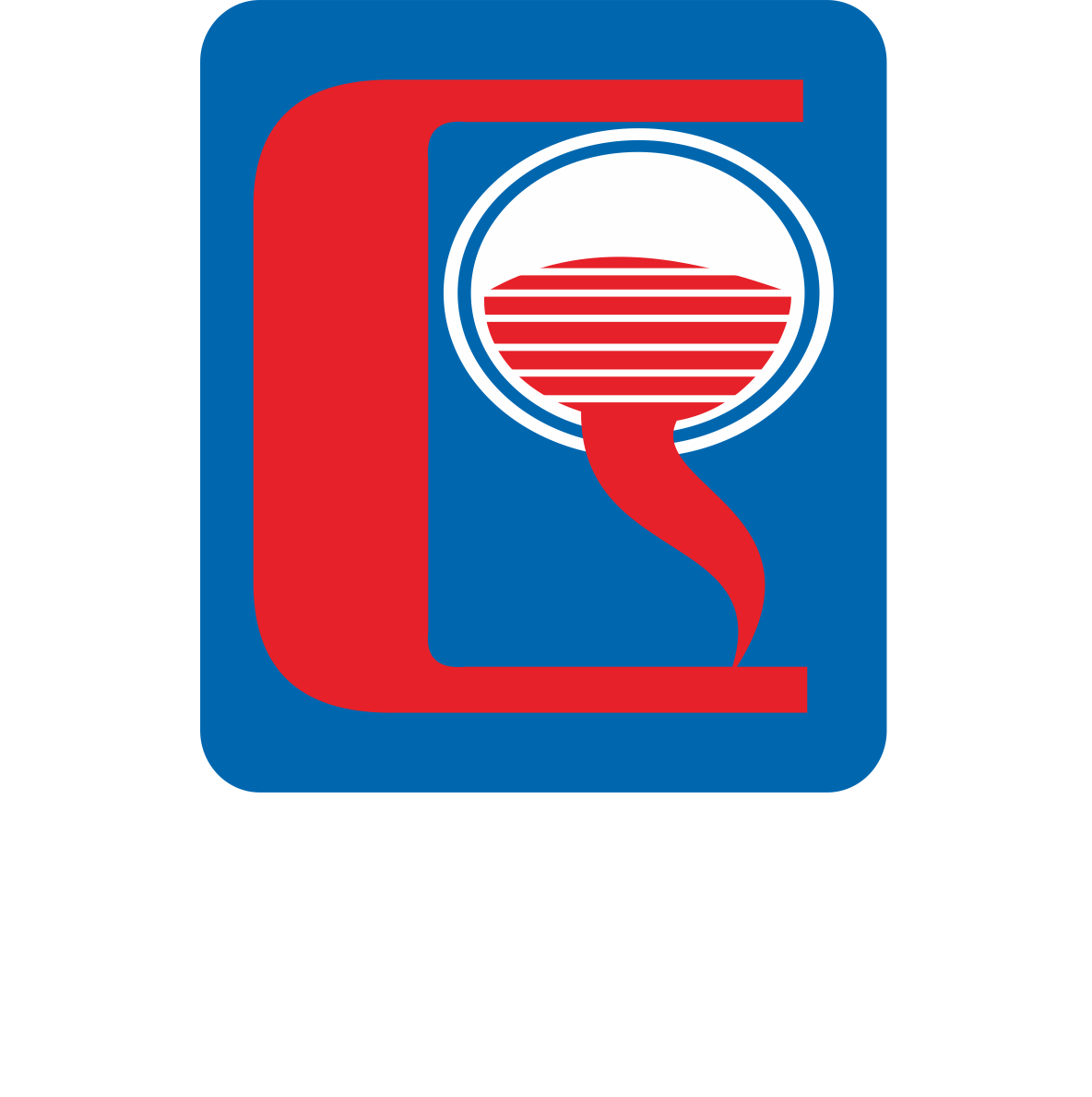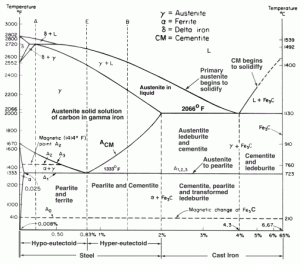From the carbon content of material, we can divide iron and steel. Cast irons typically contain 2-4 wt% of carbon with a high silicon concentrations and a greater concentration of impurities than steels.
Iron (Fe) is not a high-purity metal commercially but contains other chemical elements which have a large effect on its physical and mechanical properties. The amount and distribution of these elements are dependent upon the method of manufacture. The most important commercial forms of iron are listed below.Pig iron is the product of the blast furnace and is made by the reduction of iron ore.
a. Cast iron is an alloy of iron containing enough carbon to have a low melting temperature and which can be cast to close to final shape. It is not generally capable of being deformed before entering service.
b. Gray cast iron is an iron which, as cast, has combined carbon (in the form of cementite, Fe3C) not in excess of a eutectoid percentage—the balance of the carbon occurring as graphite flakes. The term “grayiron” is derived from the characteristic gray fracture of this metal.
c. White cast iron contains carbon in the combined form. The presence of cementite or iron carbide (Fe3C) makes this metal hard and brittle,and the absence of graphite gives the fracture a white color.
d. Malleable cast iron is an alloy in which all the combined carbon in a special white cast iron has been changed to free or temper carbon by suitable heat treatment.
e. Nodular (ductile) cast iron is produced by adding alloys of magnesium or cerium to molten iron. These additions cause the graphite to form into small nodules, resulting in a higher-strength, ductile iron.
f. Ingot iron, electrolytic iron (an iron-hydrogen alloy), and wrought iron are terms for low-carbon materials which are no longer serious items of commerce but do have considerable historical interest.
Steel is an alloy predominantly of iron and carbon, usually containing measurable amounts of manganese, and often readily formable.The various types of steel can be grouped under two major headings:
1) Carbon Steel. A steel in which the main alloying element is carbon, Carbon steels are furtherdivided in to three groups:
a. Low carbon steel. This steel has a carbon content of less than 0.30 percent. It is the most common type and is often called mild steel. It is relatively inexpensive, ductile, soft, and is easily machined and forged. Mild steel can not be heat-treated (harded). Low carbon steel is a general pupose steel.
b. Medium carbon steel: This steel has a carbon content between 0.30 percent and 0.80 percent. Harder and stronger than mild steel, it can be hardened by heat treating. Medium carbon steel is most commonly used for forgings, castings, and machined parts for automobiles, agricultural equipment, machines and aircraft.
c. High Carbon Steel: This tye of steel is easily heat treated to produce a strong, tough part. The material has a carbon content above 0.8 percent. It finds wide use in hand tools, cutting tools, springs and piano wire.
2) High Alloy Steel. These steels contain significant amounts of other elements in addition to carbon. The common high alloy steels are:
a. Stainless Steel, which is produced by using chromium as a significant allying element along with nickel and other matels. The result is a tough, hard, corrosion resistant metal.
b. Tool Steel, which is a special group of high carbon steels produced in small quantities to high quality specifications. Tool steels are used for a wide range of cutting tools and forming die.
c. Manganese Steel, which is an alloy containing 12 percent manganese and on percent carbon. This metal is used in mining, railroad, and construction equipment because of its high tensile strength.

